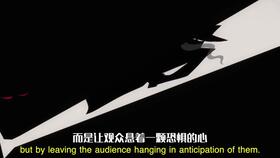Content:
Fishing, an age-old pastime, has been a source of relaxation and sustenance for countless individuals around the world. One of the most crucial aspects of fishing is the art of baiting, which involves placing the right kind of bait in the right place to attract fish. Mastering the technique of how to correctly bait a fishing spot can significantly enhance your chances of a successful catch. In this article, we will delve into the essential techniques for successful baiting in fishing.
Understanding the Basics of Baiting
Before diving into the specifics of baiting techniques, it's important to understand the basics. Baiting is the process of introducing food or lure into the water to attract fish. The right bait can make the difference between a fruitful fishing trip and a day spent waiting in vain. Here are some fundamental principles to keep in mind:
Know Your Target Fish: Different species of fish are attracted to different types of bait. Research the species you are targeting and choose the appropriate bait accordingly. For instance, live bait like worms or minnows might be more effective for certain species than artificial lures.
Understand the Environment: The environment in which you are fishing plays a significant role in bait selection. Water temperature, clarity, and depth can all influence which bait is most effective. Cold water, for example, may require heavier bait, while warm water might call for lighter, more natural-looking lures.
Consistency is Key: Consistency in baiting is crucial. Fish are more likely to bite if they see the same type of bait repeatedly. Changing your bait too frequently can confuse the fish and reduce your chances of a catch.
Choosing the Right Bait
Now that we have a basic understanding of baiting, let's explore how to choose the right bait for your fishing adventure:
Live Bait: Live bait, such as worms, leeches, minnows, or crickets, can be highly effective. The key is to keep the bait alive and moving. Use a bait holder or a small hook to keep the bait in place while it dangles in the water.
Artificial Lures: Artificial lures, such as spinners, jigs, or flies, can be used to mimic the movement of real prey. These are particularly useful in areas where live bait might not be available or when targeting more elusive fish species.
Natural Bait: Natural baits like corn, bread, or cheese can be effective for certain species, especially in areas where the water is less pressured by anglers. These baits are less likely to be ignored by fish, as they are more common in the natural environment.
The Art of Placing the Bait

Once you've chosen the right bait, the next step is to place it correctly in the water. Here are some tips for successful bait placement:
Identify the Hot Spots: Before you start baiting, take some time to identify areas where fish are most likely to be found. This could be based on structure, vegetation, or previous fishing experiences.
Use the Right Gear: The right fishing rod, reel, and line are essential for successful baiting. Choose gear that is appropriate for the type of fishing you're doing and the size of the fish you're targeting.
Cast with Precision: When casting your bait, aim for accuracy. A well-placed cast can make the difference between a fish biting and a missed opportunity.
Adjust as Needed: If you're not getting bites, don't be afraid to adjust your bait placement. Try moving to different spots, changing your bait, or altering your casting technique.
Maintaining the Bait
Once your bait is in the water, it's important to maintain it to ensure it remains effective:
Keep the Bait Alive: If you're using live bait, keep it as lively as possible. Oxygenating the water can help keep the bait alive, especially in warmer temperatures.
Regularly Check the Bait: Periodically check your bait to ensure it's still in good condition. A damaged or deteriorating bait can reduce your chances of a catch.
Avoid Overloading: Don't overload your hook with too much bait. This can make it difficult for the fish to take the bait and may lead to a missed opportunity.
Conclusion
Baiting is an essential skill for any angler looking to improve their fishing success. By understanding the basics of baiting, choosing the right bait, placing it correctly, and maintaining it effectively, you can significantly increase your chances of landing that big catch. Remember, fishing is as much about patience and practice as it is about technique. With time and experience, you'll become a master of the art of right-way fishing. Happy fishing!












